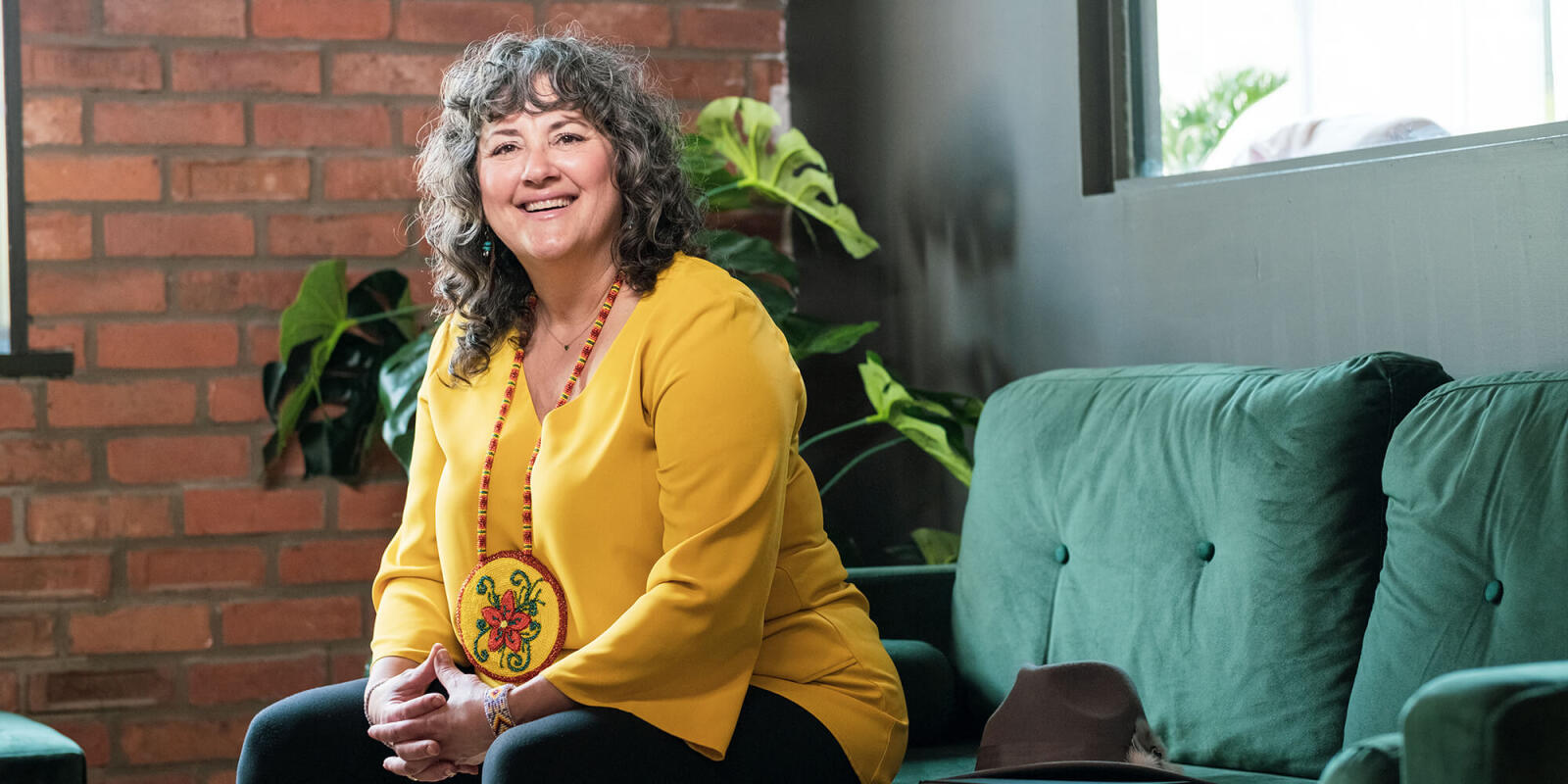August 2, 2023

Landscapers can create peace by embracing Indigenous ways of knowing
Mentor Moment: Jody Harbour
As an urban indigenous woman, Jody Harbour started deeply exploring her own heritage and roots a little over ten years ago. Since then, she has become a passionate advocate for Indigenous knowledge and culture as co-founder of Grandmother’s Voice, an Indigenous women-led organization, unifying Indigenous voices and welcoming all.
To honour missing and murdered Indigenous women, girls and children, Grandmother’s Voice created a healing garden at their headquarters in Milton, Ont. featuring over 30 native species. We asked Jody to share more about the project and its impact.
What is medicine or healing garden?
As mentioned in the Haudenosaunee Thanksgiving Address, ‘As far as the eye can see, the plants grow working many wonders. They sustain many life forms.’ For me, a medicine or healing garden is a place where I go to rest my mind, body and spirit. I trust the medicines, whether a professionally designed garden by Mother Earth or by a landscaping company, any collection of plants, herbs or food supports and reminds me to be grateful for all the plant life provides.
Why are green spaces so important?
The knowledge that has been transferred to me by Indigenous Elders is that the respect for the natural world is what will heal the people. Metaphors are a way of interpreting Indigenous beliefs and practices. One metaphor used when referring to Mother Earth, is comparing Mother Earth to women as the creators of life and nurturers. When the modern world ends the violence, destruction and exploitation of Mother Earth, the harm and violence to our women and girls will end. It is a harsh message to read, however, there is no replacement for our women as they are the creators of life and there is no replacement for Mother Earth as she is what sustains all beings.
Describe the positive effects on well-being and healing experienced by visitors to your garden.
This garden was cultivated with the vision of collective hope, love, community, and healing. It has attracted those with the same vision and needs. This garden came to fruition in time to support the community when the announcement of the 215 graves were found at the Indian Residential School on Tk’emlups te Secwépemc First Nation in Kamloops, B.C., on May 27, 2021.
Describe some ways landscape professionals can create deeper harmony with nature in their designs.
I heard Grandmother Renee Thomas-Hill use the term “Groomer of Mother Earth” when referencing a landscaper’s responsibility. I mentioned this to a friend of mine — that when he “groomed mother earth”, to approach her with love and appreciation for her beauty and purpose.”
These thoughts are healing and an approach to positive thinking and wellbeing, all while creating a larger purpose for professionals.
How do you feel about incorporating the four sacred plants (sweetgrass, tobacco, sage, and red cedar) into public gardens?
These plants are sacred to Indigenous people, honoured in prayer and ceremony and have significant meaning. Appropriation is what comes to mind. Without going into a cultural humility training module, I would suggest an Indigenous community member be consulted before any of the ceremonial medicines are planted in a public space. It is imperative the medicines are cared for and not abandoned, as well as having Indigenous people be included in the planning and planting process.
What do you wish more landscapers and non-Indigenous people would implement in their landscapes and gardens?
Native species. What I have picked up is that we should be promoting native plants. A crucial element of colonial history is that native plants and trees were burned on Indian reserves to leave the people with no resources. Visitors and settlers came across the waters with invasive species which are now capable of causing extinction of native plants and animals. It would be a great call to action for the people to embrace this as their Truth and Reconciliation work and encourage more native species planting and invasive species removal or relocating.
What are some plant combinations that, when planted together, create a symbiotic relationship and improve biodiversity?
The Three Sisters: corn, beans and squash is what I believe is one of the most famous Indigenous plant combinations. These three plants protect and nourish each other in different ways as they grow and provide a solid diet for their cultivators. Another metaphor that immediately came to my mind was the symbolism of the braided sweetgrass, hair of Mother Earth. We are stronger together.
If gardens and caring for the earth is something you’re passionate about, be sure to check out the Grounds Management and New Plants issue of Landscape Trades in October.